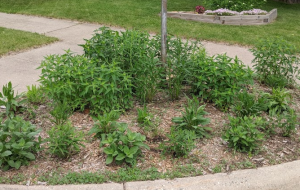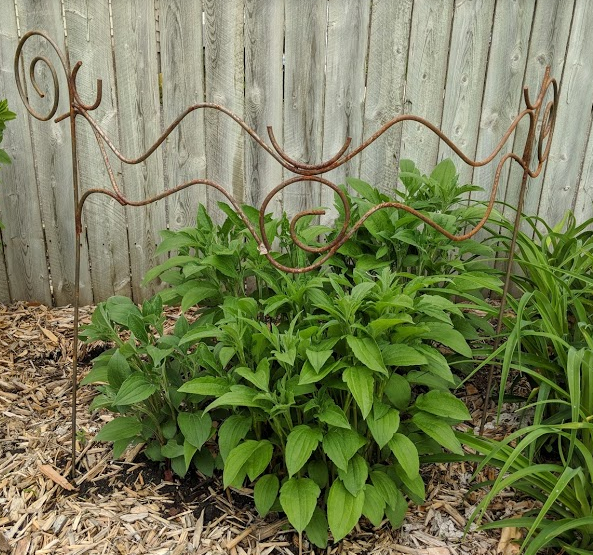Click below to listen to my 2 min. Garden Bite radio show: Cutting back perennials to control height
Audio PlayerThe city I live in was set to do some reclamation on my streets. I live on a corner and they planned on doing both of them. So the engineer told me that I’d have to take out my butterfly garden plants if I wanted to keep them while they did the work and they’d put soil back for me to replant but their height was too tall.


I was set to remove the plants and put them in my own make-shift nursery, then the project was postponed to next year. Okay, but now I know some of my plants are too tall, plus, as a recent article in Northern Gardener magazine noted, some don’t like the flopover that can happen with tall native plants.
There’s a solution! Staking is one, but it depends on what you use to stake them with!

Another option to lower your late-summer, fall blooming plants is to cut them back.
Lynn Steiner, the author of the article, says when plants are 12 to 18 inches tall, you can prune them to 6 to 10 inches tall. About a third to half their size.

While it seems a little risky, it’s not, the plants bounce back bushier, just like I talked about with herbs yesterday. Choose some plants for pruning and hold back on others so you get a mixed height! Often those that are cut back will bloom heavier too! Perennials for cutting back include:
- Agastache – Anise hyssop
- Boltonia
- Turtlehead
- Purple Coneflower
- Joe-pye weed
- Sneezeweed
- Heliopsis
- Lobelia – cardinal flower
- Monarda
- Phlox – sweet william
- Garden phlox
- Obedient plant
- Black-eyed susans
- Goldenrod
- Aster
- Spiderwort
- Vervain
- Ironweed
NOTE: There are some plants you should not prune back, blanket flowers, gentian, false indigos and liatris. I have liatris in my butterfly garden.
I do love this really cool metal piece I bought from a local artist. I could also cut them back and keep them lower but I like to let them go.

